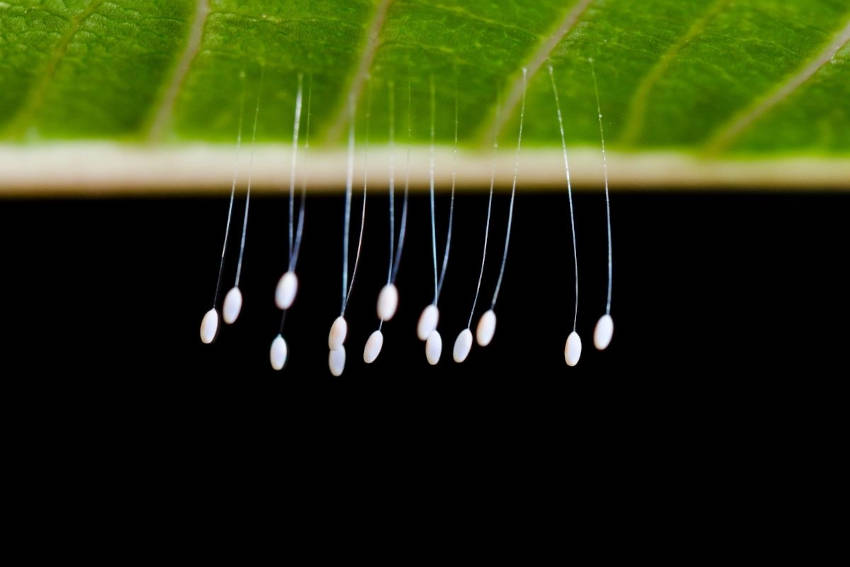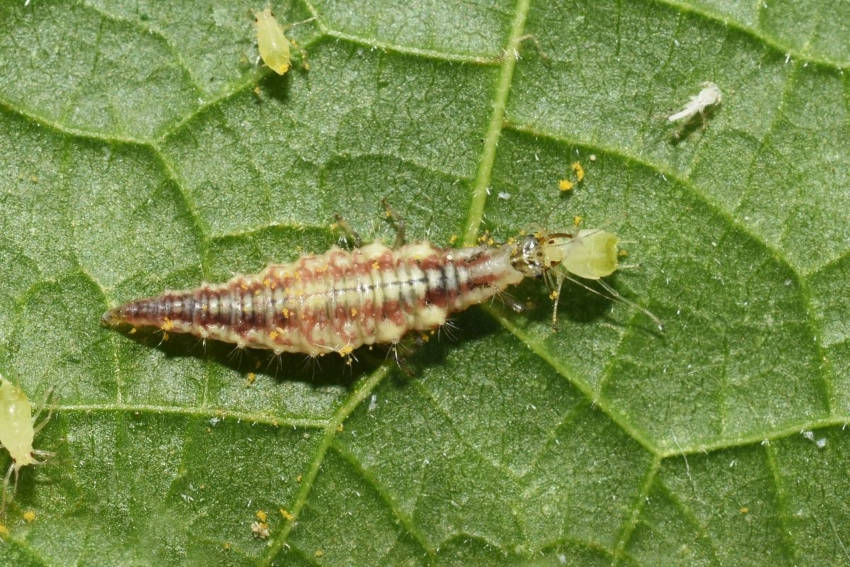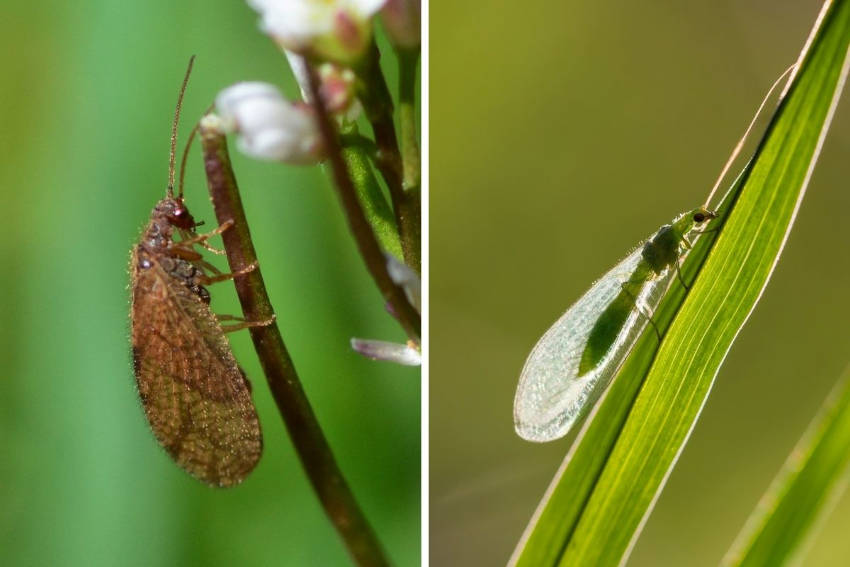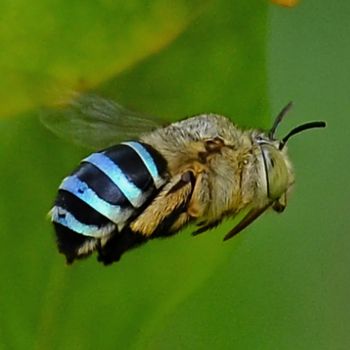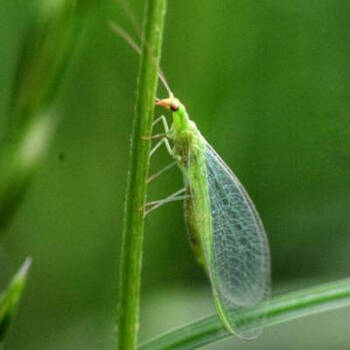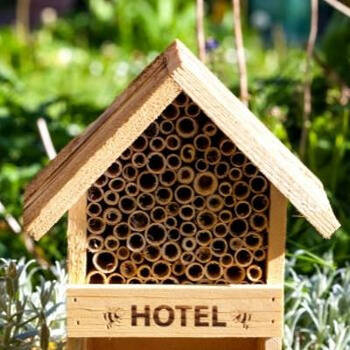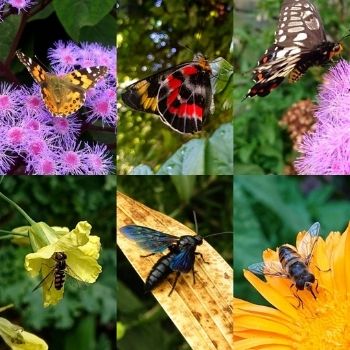In the never-ending battle against aphids and the damage they cause to plants, most gardeners welcome all the help they can get. One excellent ally in the struggle is the lacewing, a beneficial insect that's a predator of soft-bodied insects, with a particular preference for aphids.
Considering that a lacewing in its larval stage can devour up to 60 aphids an hour, as well as opportunistically dining on many other garden pests, encouraging a healthy lacewing population in your garden is an excellent way to reduce your reliance on artificial pest control measures.
What Are Lacewings?
There are around 5000 different species of lacewings worldwide, and more than 600 of them have been found in Australia. The most common lacewing in Australian gardens is Mallada signatus, which is a vivid green in colour, around 15mm long, with large, lacy wings that fold over at the back in an inverted 'V' shape. Brown lacewings tend to be a little smaller, at around 8mm in length, but all have two sets of delicate wings with a prominent network of veins.
Lacewing adults are nocturnal and attracted to light, and are most active in warmer climates. In most cases, they live for just three to four weeks in their adult stage. In cooler areas, though, lacewings may hibernate over winter.
The adults feed mostly on nectar, pollen and honeydew, but they'll also consume small insects or eggs given the opportunity. Their main diet helps with pollination in the garden, but it's the lacewing larvae that provide the most benefit to gardeners thanks to their avid consumption of aphids.
The Value of Lacewing Larvae
The lacewing life cycle begins with the adult female laying eggs onto the undersides of leaves. Brown lacewings lay their eggs directly on the leaf, while green lacewings lay their eggs on the end of short stalks, which helps to protect them from being predated by ants.
Eggs can be laid singly, or in clusters, rows or u-shapes, with each female laying up to 600 eggs over three to four weeks depending on the species. After about four days, the eggs hatch to produce tiny brown or white larvae with a ridged body and a distinctive look that's sometimes compared to an alligator.
The larvae then begin to feed voraciously, eventually reaching up to 15mm in length. Their appetite and hunting prowess have earned them the nickname of 'aphid lions'.
Their method of catching aphids is a little gruesome but highly effective. The larvae use their sickle-shaped jaws to pierce their prey and suck out the body fluids, leaving a husk behind. They then carry these remains on their backs to act as camouflage as they hunt their next aphid appetiser.
While lacewings are best known for consuming impressive numbers of aphids, they'll also feed on caterpillars, mealybugs, psyllids, scale and lace bugs, increasing their all-round value as a natural pest controller.
How to Attract Lacewings to Your Garden
A healthy lacewing population is a great way to keep insect pests under control. Here are five approaches that work well in a combined strategy.
1. Reduce Chemical Use
Many common pesticides and other chemicals are toxic to lacewings, including synthetic pyrethroids, organophosphates and neonicotinoids. Eliminating chemicals or at the least keeping chemical use to a minimum will benefit lacewings as well as your garden's wider ecosystem.
If you absolutely need to use sprays to control pests, aim to use selective products that deal with a specific problem rather than broad-spectrum insecticides. Also, use them as sparingly as possible and only in the areas where they're necessary, rather than as a general measure.
2. Keep Ants Under Control
Ants and lacewings feed on many of the same insects, including scale and mealybug. In most cases, this is a good thing - the more predators that target a pest, the lower the pest population will be. However, when it comes to aphids, the story is more complicated.
Ants feed on the honeydew that aphids produce, and they actively 'farm' the pests to ensure they have a constant supply of food. This can also mean protecting aphids from lacewing predation, sometimes aggressively. Consequently, ants and lacewings don't live happily side by side. Keeping your garden's ant population under control is essential to maintaining healthy lacewing numbers.
Considering that ants are also valuable garden inhabitants, helping with pollination, caterpillar control and recycling of organic debris, you probably don't want to eliminate them completely. A balanced approach could mean removing nests in and around your veggie patch while leaving them alone elsewhere in your garden so that both creatures can co-exist.
3. Provide Suitable Habitat
A simple way to increase lacewing numbers is to provide them with a safe, sheltered habitat, which is particularly important for an overwintering population. As lacewings are flying insects, they'll generally prefer to nest somewhere raised around two metres off the ground, so installing an insect hotel on a wall or tree trunk is ideal.
Alternatively, dedicate a corner of your garden to a high, dense hedge, which will provide natural shelter and concealment.
4. Grow Companion Plants
Because adult lacewings feed heavily on pollen and nectar, growing nectar-rich flowers will help attract them to your garden as well as attracting bees, butterflies and other beneficial insects. If adult females find a ready supply of food, they're much more likely to lay their eggs close by.
Umbelliferous and daisy-like flowers seem to be the most attractive, particularly alyssum, dill, calendula, angelica, golden marguerite, coriander, cosmos, Queen Anne's lace, yarrow, fennel, tansy and dandelion.
5. Tolerate Early Aphids
Lastly, being a little lenient with the first aphid infestation of the season can help to develop a lacewing presence and reduce future problems. If you can tolerate the first outbreak of the season, the ready supply of aphids can encourage any passing lacewings to lay eggs and establish a breeding population.
And after that, you should find that a permanent lacewing presence will help keep further aphid infestations under control, reducing the need for insecticides and other less natural methods of control.
